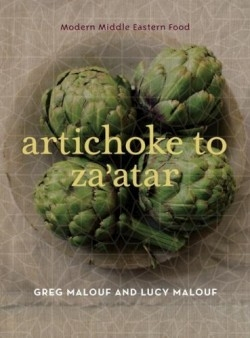Artichoke to Za'atar
Modern Middle Eastern Food
For reasons unknown, Middle Eastern cooking never quite achieves the moniker of “next new thing” in Western culinary circles. Might it be the dressed-down approach taken by hummus- and tabbouleh-serving earth mothers in their natural food delis that serves to undermine the efforts of contemporary Arab-minded chefs? Or maybe it’s the sheer exoticism of certain dishes, spices, and techniques? Hard to figure because the ingredients needed to prepare most Asian dishes are far more difficult to source. In fact, the goods in a Middle Eastern cupboard wouldn’t intimidate any modestly skilled Western home cook. Staple items like almonds, artichokes, chickpeas, couscous, dates, eggplants, lentils, pistachios, saffron, and vine leaves are all but commonplace in the States. And while many traditional dishes are labor intensive, a handful of Western-trained chefs (with Middle Eastern backgrounds) are successfully experimenting with Middle Eastern cooking to make the cuisine more approachable.
The ever-present danger to such experimentation is change for novelty’s sake; a creativity-at-all-costs game played by too many maverick chefs with little understanding of the inherent (cornerstone) traditions known to any native cuisine. The best scenario is when a homegrown chef accepts the challenge, as is the case with Greg Malouf, co-author of Artichoke To Za’atar: Modern Middle Eastern Cuisine. Australian born, Malouf’s childhood centered around his home’s kitchen where his Lebanese grandmother and mother schooled him in their traditional cooking. After culinary school, he spent eighteen years cooking in highly regarded restaurants in Australia, France, Italy, Hong Kong, and Austria before landing at Melbourne’s O’Connell’s Hotel where the owners fully encouraged him to develop his modern Middle Eastern style.
In Artichoke to Za’atar, first published in 1999 as Arabesque, Malouf and his co-author (and wife) Lucy, sought to demystify the region’s cuisine ingredient by ingredient. The winning result is a collection of 170 recipes organized by the dishes’ most pronounced elements. For instance, the chapter on mint opens with two pages of mint-lore and tips on selecting, storing, and using the herb followed by four mint-laden recipes including the delicious-sounding Minted Split Pea Soup, and Hot Mussel Salad with Feta and Fennel using mint in the lemony dressing. In all, Artichoke to Za’atar offers forty-five chapters, several dozen color photographs, and, thanks to Lucy, page after page of some of the highest quality prose to be found in cookery books.
Reviewed by
Matt Sutherland
Disclosure: This article is not an endorsement, but a review. The publisher of this book provided free copies of the book to have their book reviewed by a professional reviewer. No fee was paid by the publisher for this review. Foreword Reviews only recommends books that we love. Foreword Magazine, Inc. is disclosing this in accordance with the Federal Trade Commission’s 16 CFR, Part 255.

